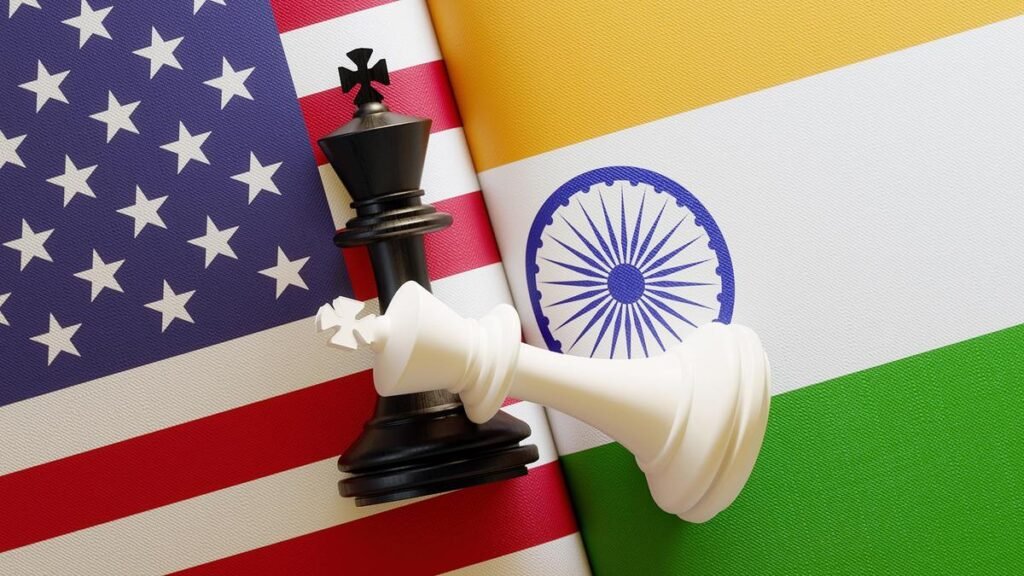AI Ownership and Copyright: India’s Ambiguous Landscape, ETLegalWorld
India’s embrace of artificial intelligence took a major step forward on November 5, 2025, when the Ministry of Electronics and Information Technology released its comprehensive AI Governance Guidelines.
The tone of the guidelines remains pro-innovation: principles like “Innovation over Restraint” and “People First” coupled with a vision of AI democratised through Digital Public Infrastructure, subsidised GPU clusters, and sovereign foundation models. However, even amid this optimism, the adaptation of copyright and patent laws to the realities of AI-generated work remains unresolved.
The guidelines introduce a “graded responsibility” framework that distributes liability across the AI value chain rather than concentrating it on a single actor.
“Liability for copyright infringement lies with the individual(s) who violate the “exclusive rights” of the copyright owner as defined under Section 14 of the Copyright Act,” said Mohit Lahoty, partner at ThinkLaw, Advocates. “In most cases, this will be the end user who circulates or communicates the infringing material. However, depending on the nature of the training methodology employed, the service provider or platform owner may also be held liable.
According to Divya Kumat, president, chief legal officer and company secretary at datamatics global services, liability under this model depends on “who had control over the system at the point where harm could have been prevented, who had knowledge of the risks, and who ultimately benefited from the activity.”
The Copyright Paradox: Tools vs Authors
Section 2(d) of the Copyright Act, 1957 requires the “author” to be human. That leaves India’s copyright framework without a clear legal basis for recognising purely AI-generated works.
“The underlying premise is that AI functions as a tool, not an autonomous agent,intended to support and enhance human creativity. The primary objective of copyright law is to safeguard the economic rights of creators, ensuring they are duly rewarded for their original works,” said Lahoty.
Yet this principle raises a practical question: How does this framework incentivise companies building generative AI platforms?
“Major AI-focused companies such as Google, OpenAI, Nvidia, and Microsoft monetise their investments through subscriptions and API pricing, rather than by selling copyrights in the outputs,” Kumat explained. “Their commercial value is derived from owning the model and controlling access to it, rather than registering copyrights. The focus is on legal safeguards, workflow integration, building trust and reliability—not on claiming exclusive ownership of the generated images.”
“Evolving AI & Copyright jurisprudence gives some guidance with respect to licensed use of copyright protected content for training AI. Whilst so, liability constructs will evolve case-wise. At this juncture for India, having a clearly stated approach to the extent of copyright protection whilst training AI or on the AI outputs is critical,” added N.S. Nappinai, senior advocate at Supreme Court of India, while underscoring the urgency of legislative intervention.
Patents: Settled Principle, Murky Practice
Over 54,000 patent applications related to GenAI were filed between 2014 and 2023, with 25 percent of them in 2023 alone, according to a report by World Intellectual Property Organization (WIPO).
The Patents Act 1970 requires an inventor to be a natural person. While that provides legal clarity on paper, ambiguity persists when AI-generated inventions involve multiple contributors, creating uncertainty over who deserves patent protection.
“As with the Copyright Act, the law requires that the inventor be human,” said Lahoty. “Consequently, if an invention is entirely conceived by an AI system without human input, it would not qualify for patent protection.”
“Mere involvement in developing, owning, operating, or training the AI system, without evidence of a creative or intellectual contribution to the inventive step, does not give rise to inventorship or patent ownership,” adds Kumat.
“Patents and AI would again follow global trends for now with innovation being human centric,” notes Nappinai. “Using existing laws, regulations or precedents would result in purposive interpretation that may plug the gap till laws evolve. It may not be a permanent solution.”
The guidelines’ emphasis on existing sectoral laws rather than new legislation creates a compliance puzzle for Indian startups operating globally. The UK’s opt-out TDM mechanism and the EU AI Act’s transparency requirements signal a global shift toward AI-specific regulation.
“India should not create entirely new, domestically unique copyright or patent categories for AI-generated works at this stage,” recommended Kumat. “Instead, it should align with global principles underlying human authorship, disclosure of AI involvement and traceability.”
Nappinai emphasised the need for technology-agnostic frameworks that remain dynamic: “Having technology agnostic laws or provisions is a welcome move but the same would still have to be dynamic enough to protect against existing and evolving threats,” notes Nappinai.
The guidelines propose new bodies like the AI Safety Institute and sectoral regulators, but the framework relies heavily on voluntary compliance and coordination, this might create enforcement challenges in future.
“Intellectual property owners will continue to have access to legal recourse and remedies as provided under the applicable statutes,” said Lahoty.
“The AI Safety Institute will assess AI systems and flag high-risk misuse, after which the matter is referred to the relevant regulator (such as RBI, TRAI, or CDSCO) that holds the legal authority to impose penalties, suspend operations, or issue compliance directives, ” observes Kumat. “Any appeals or challenges to such enforcement actions will then proceed through the appropriate tribunal or court.”
“The recommendation is not to design an entirely new AI law at this stage, but rather to amend sectoral regulations as technology is evolving too fast,” she adds.
A First Step, Not a Final Answer
Until Parliament clarifies the copyright status of AI-assisted works, establishes transparent mechanisms for patent ownership allocation, and ensures copyright holders and patent claimants possess meaningful recourse through accessible dispute resolution, India’s policy confidence may prove premature.
“The guidelines need to be viewed merely as a first attempt with a lot more to be evolved. Law and policy makers need to not just pay lip service to ‘People First’ but ensure the same and this would necessarily entail walking the tightrope of balancing innovation and enabling businesses with protecting individual rights,” concludes Nappinai.
This will be discussed at our IP and Innovation Conclave on November 14 in Mumbai. Check out the agenda and register now.




